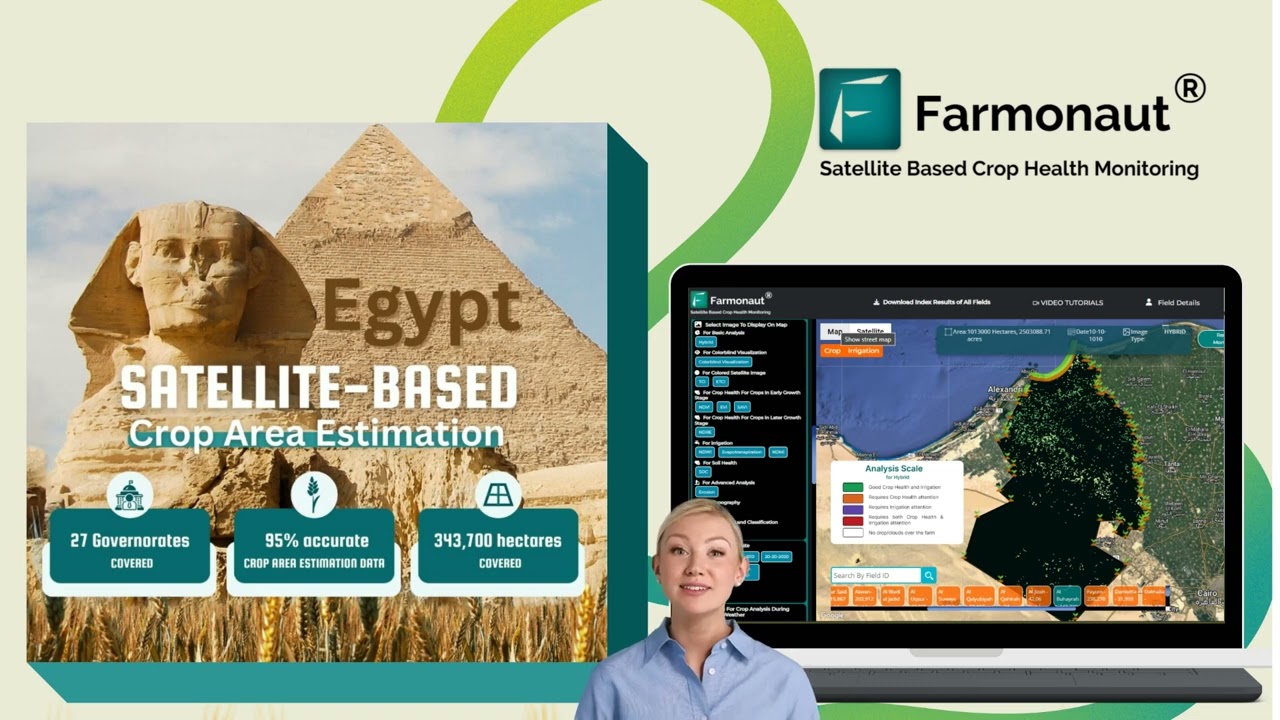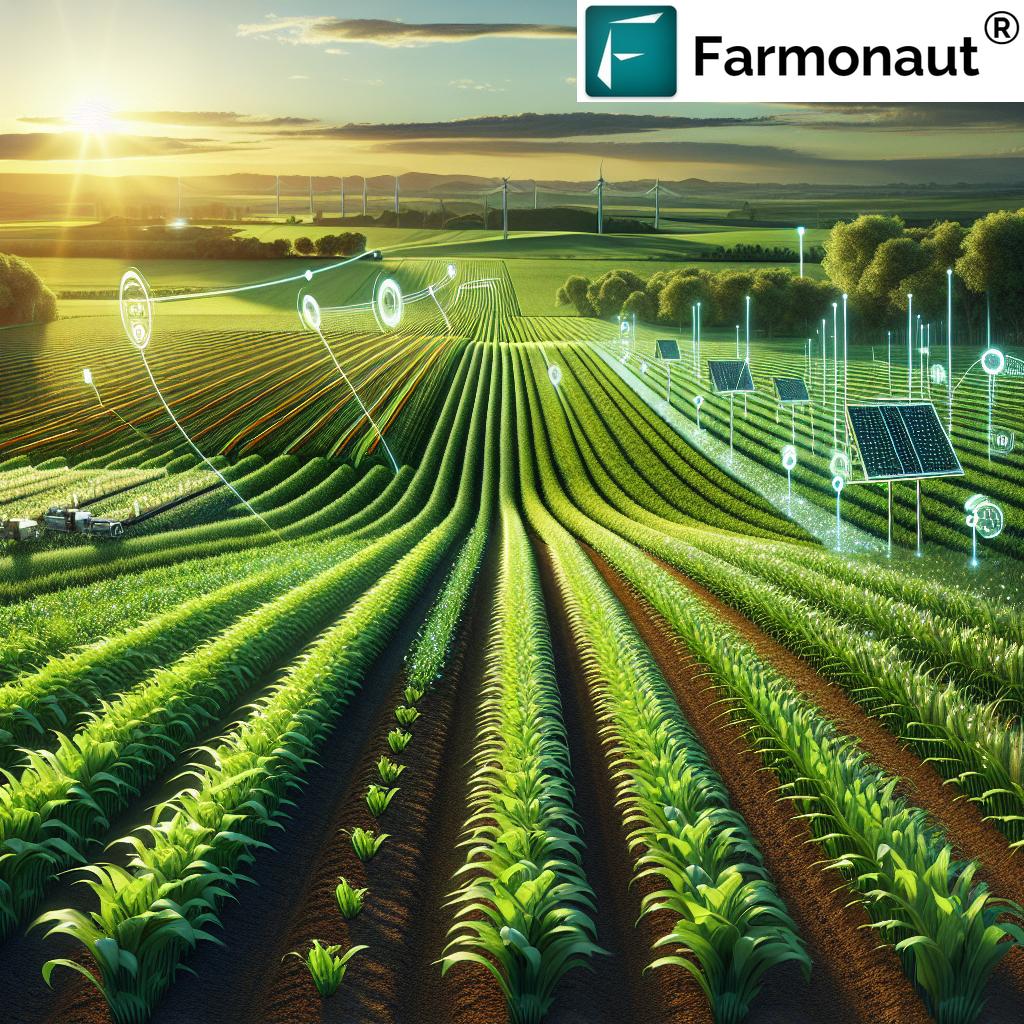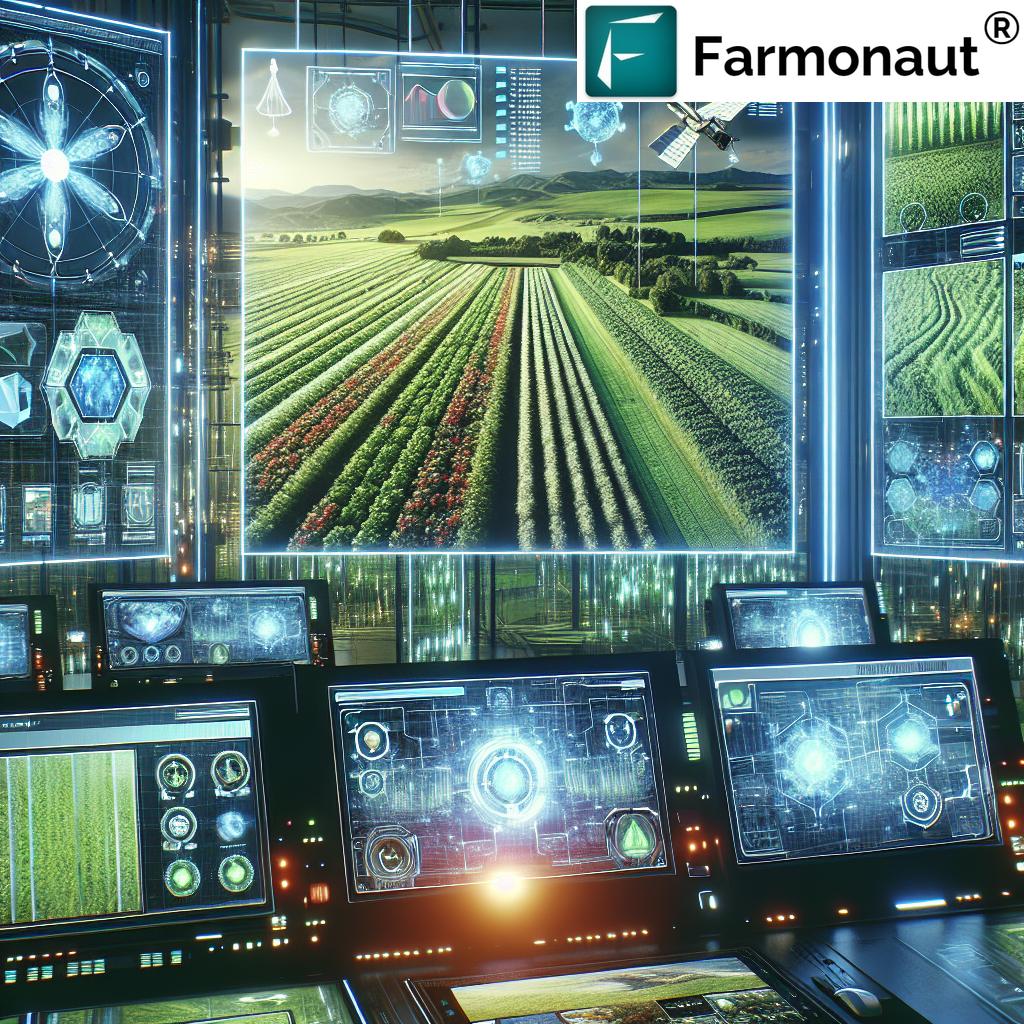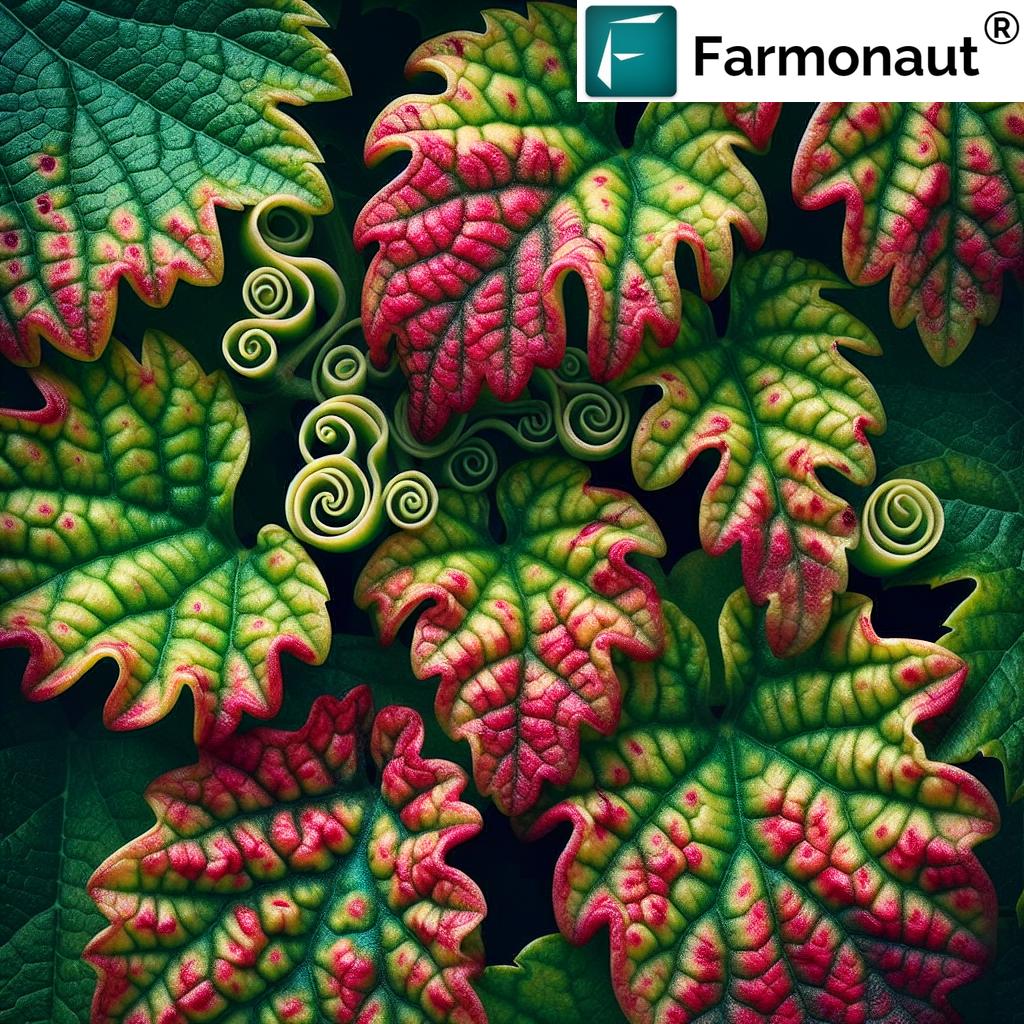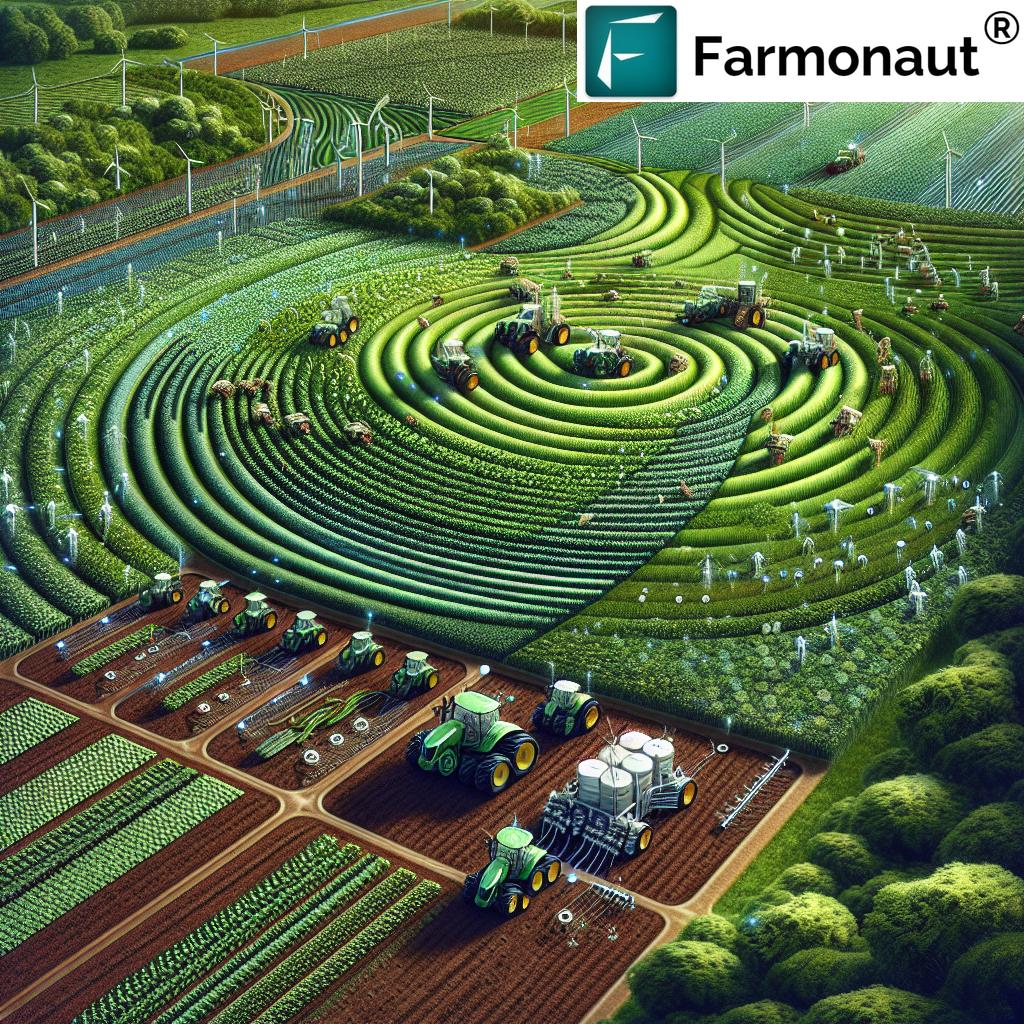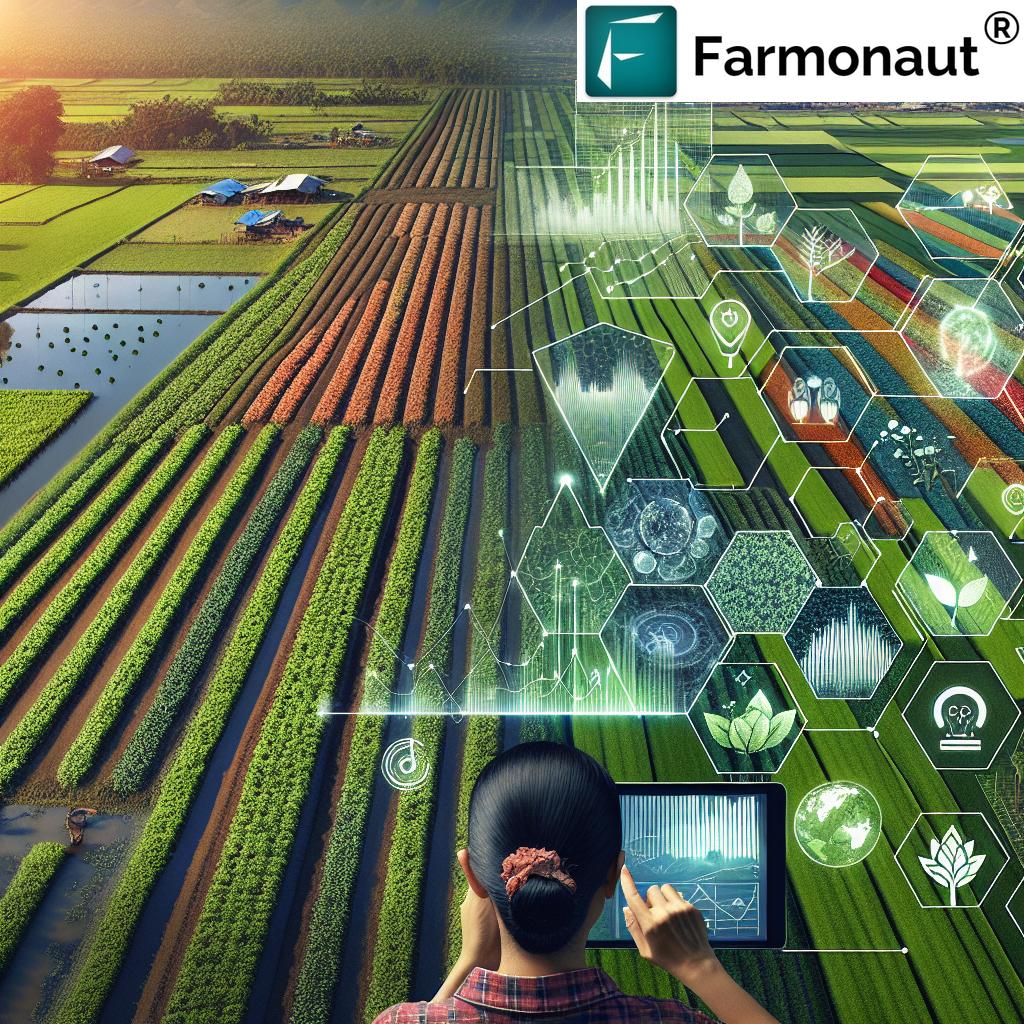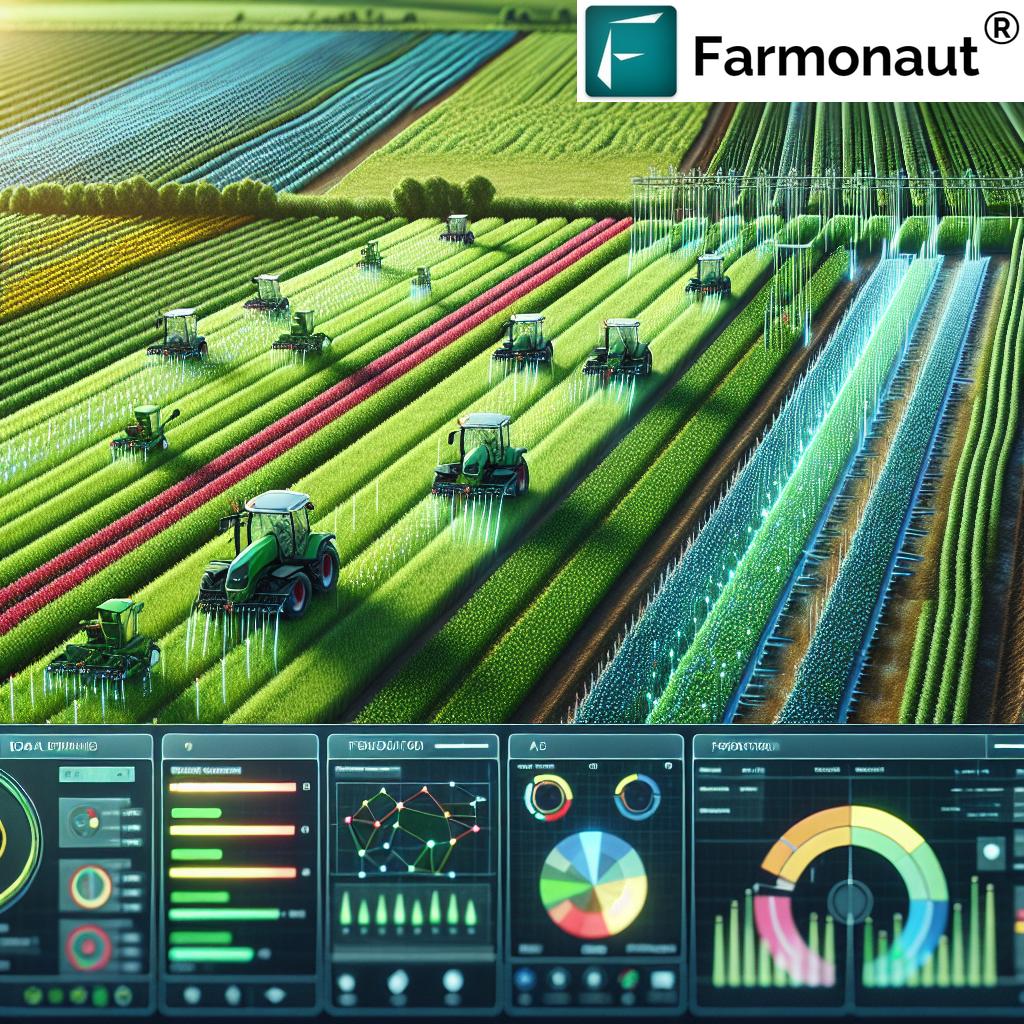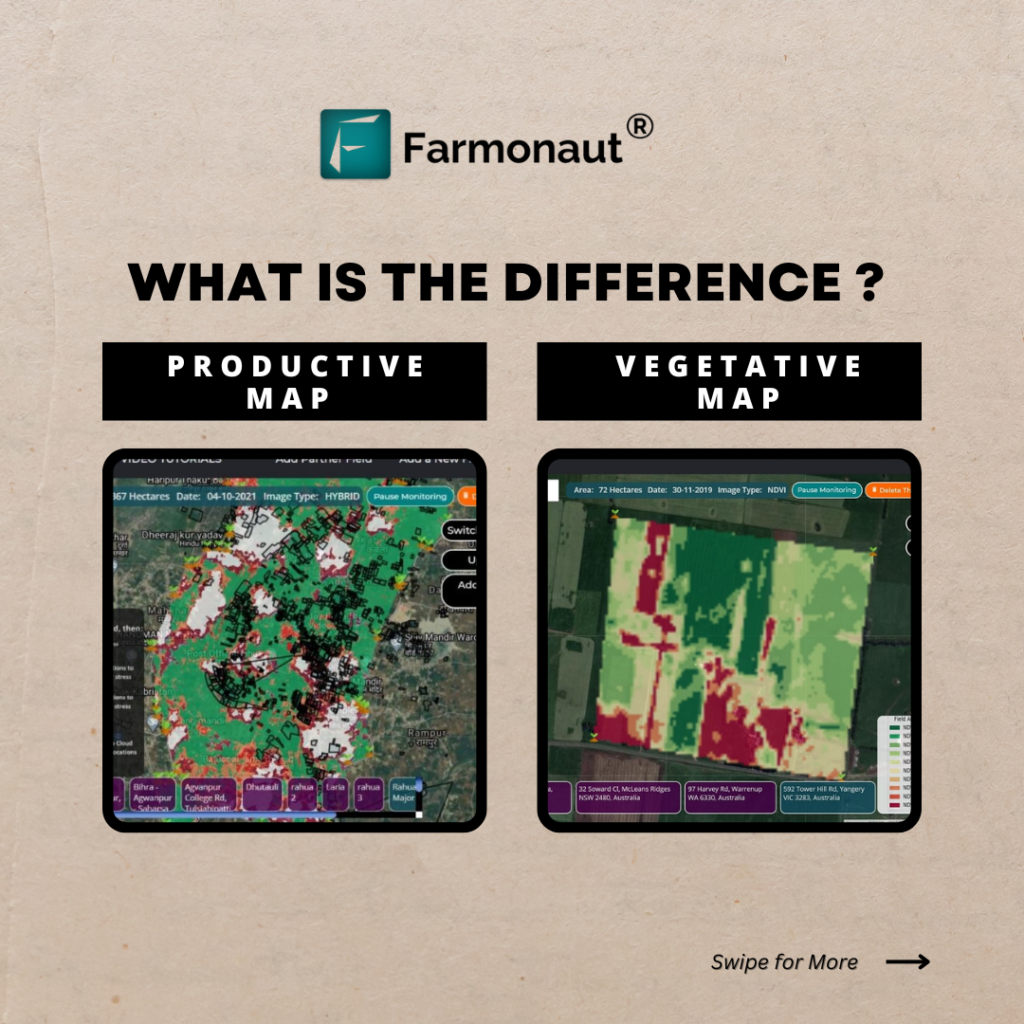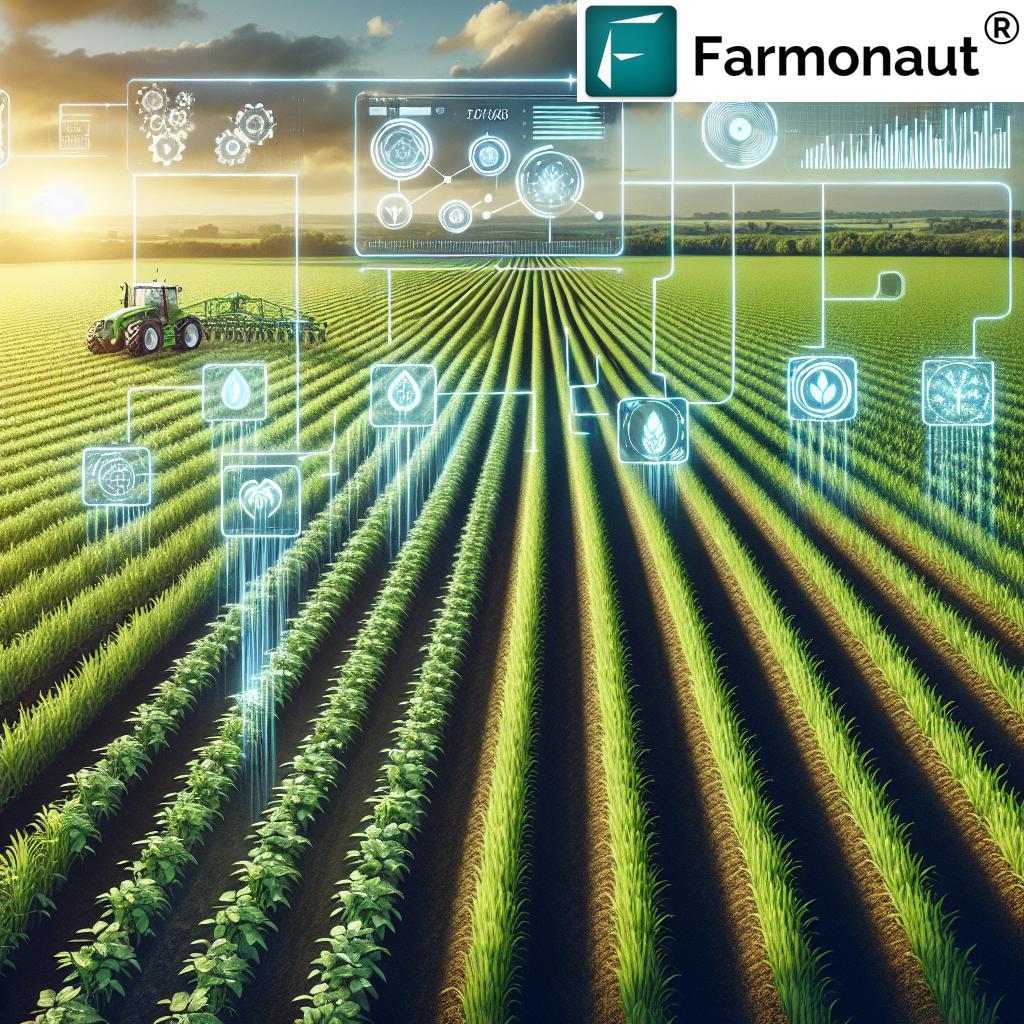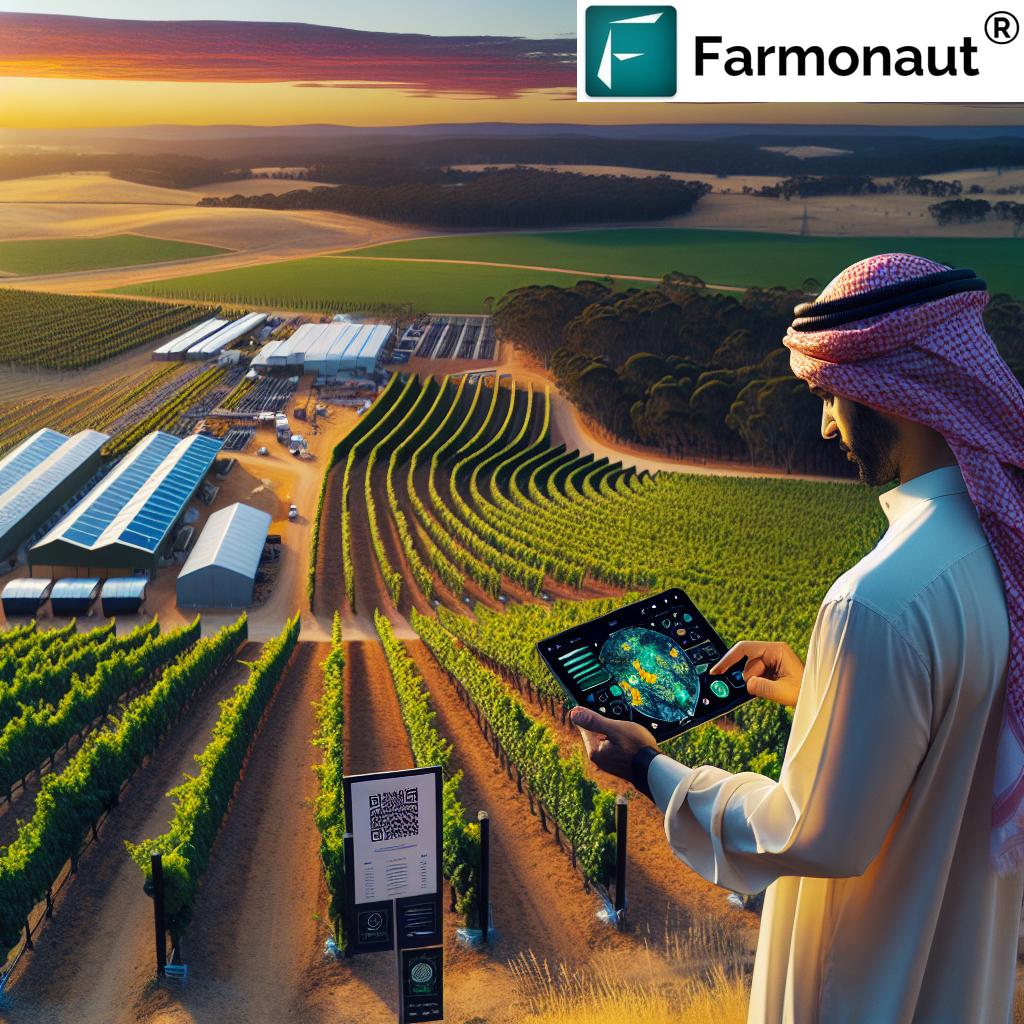Revolutionizing Australian Viticulture: How GIS and AgTech Are Shaping Sustainable Winegrowing Practices
“Australian viticulture employs GIS-powered precision techniques in over 65% of commercial vineyards, boosting sustainability and yield.”
Welcome to the cutting edge of Australian viticulture, where innovation meets tradition in the pursuit of excellence in wine production. In this comprehensive guide, we’ll explore how Geographic Information Systems (GIS) and Agricultural Technology (AgTech) are transforming the landscape of sustainable winegrowing practices across Australia’s diverse wine regions. From the sun-drenched vineyards of the Barossa Valley to the cool-climate estates of Tasmania, we’re witnessing a revolution in how we grow, manage, and export some of the world’s finest wines.
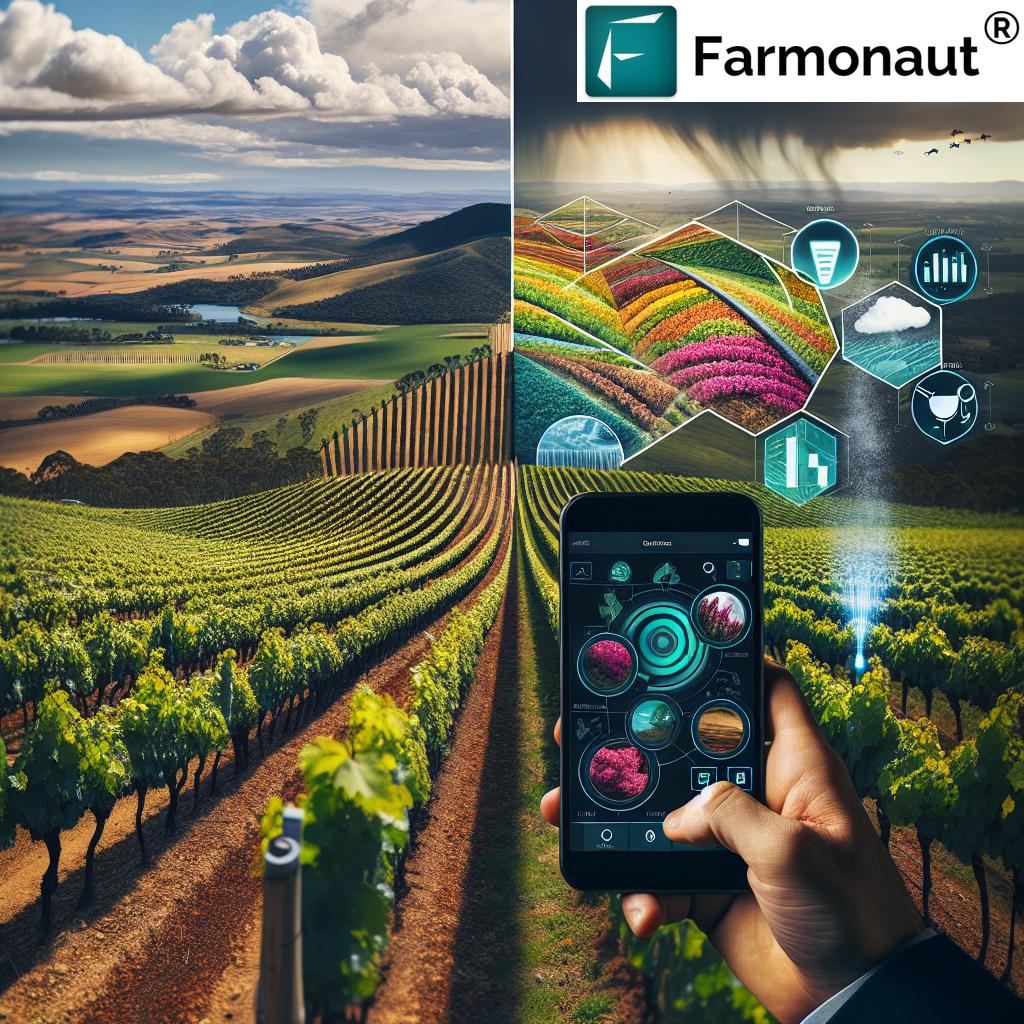
As we delve into the world of precision viticulture and sustainable winegrowing, we’ll uncover how Australian winemakers are harnessing the power of satellite imagery, artificial intelligence, and data analytics to produce exceptional wines while minimizing environmental impact. Join us on this journey through the vineyards of innovation, where every grape tells a story of technological advancement and ecological stewardship.
The Rise of GIS in Australian Viticulture
Geographic Information Systems have become an indispensable tool in modern vineyard management. By integrating spatial data with real-time monitoring, GIS enables winemakers to make informed decisions about every aspect of their operations. Let’s explore how GIS is revolutionizing Australian viticulture:
- Precision Mapping: GIS allows for detailed mapping of vineyard topography, soil composition, and microclimates, enabling targeted interventions.
- Resource Optimization: Water usage, fertilizer application, and pest control can be fine-tuned based on GIS data, reducing waste and environmental impact.
- Yield Prediction: Advanced algorithms combined with historical and real-time data help forecast harvest volumes with unprecedented accuracy.
The integration of GIS in viticulture has been a game-changer for Australian winemakers. By leveraging this technology, they’re able to produce higher quality grapes while simultaneously reducing their environmental footprint. This alignment of quality and sustainability is key to Australia’s growing reputation in the global wine export market.
AgTech Innovations Transforming Winegrowing
AgTech is at the forefront of the sustainable winegrowing revolution in Australia. From AI-powered decision support systems to Internet of Things (IoT) sensors, these technologies are empowering winemakers to achieve new levels of efficiency and quality. Here’s how AgTech is making waves in the vineyard:
- Smart Irrigation Systems: IoT sensors monitor soil moisture levels in real-time, allowing for precise and water-efficient irrigation schedules.
- Drone Technology: Aerial imagery from drones provides detailed insights into vine health, enabling early detection of issues like disease or nutrient deficiencies.
- Robotic Harvesters: Automated harvesting machines are increasing efficiency and reducing labor costs while ensuring gentle handling of grapes.
These innovations are not just improving the quality of Australian wines; they’re also addressing critical challenges such as labor shortages and climate change impacts. By embracing AgTech, Australian vintners are positioning themselves at the forefront of sustainable winemaking practices globally.
Sustainable Winegrowing Practices in Action
Sustainability is more than just a buzzword in Australian viticulture; it’s a fundamental principle guiding the industry’s future. Let’s examine some of the key sustainable practices being adopted across the country:
- Organic and Biodynamic Viticulture: Many Australian wineries are transitioning to organic or biodynamic methods, eschewing synthetic chemicals in favor of natural alternatives.
- Water Conservation: Innovative techniques like deficit irrigation and water recycling systems are helping vineyards thrive in Australia’s often drought-prone climate.
- Biodiversity Enhancement: Planting native vegetation and creating wildlife corridors are becoming common practices, fostering a balanced ecosystem within vineyards.
These sustainable practices not only benefit the environment but also contribute to the unique terroir of Australian wines. By working in harmony with nature, winemakers are producing wines that truly reflect the character of their land.
Combating Climate Change in the Vineyard
Climate change poses significant challenges to viticulture worldwide, and Australia is no exception. However, Australian winemakers are taking proactive steps to adapt to and mitigate the effects of a changing climate:
- Varietal Selection: Planting grape varieties better suited to warmer temperatures and experimenting with heat-resistant clones.
- Canopy Management: Implementing advanced trellising systems and leaf removal techniques to protect grapes from excessive sun exposure.
- Carbon Sequestration: Adopting practices that increase soil organic matter, effectively turning vineyards into carbon sinks.
These climate-smart strategies are ensuring the longevity of Australian viticulture while also contributing to the global effort to combat climate change. As a result, Australian wines are not just surviving in a changing climate but thriving, with new expressions of terroir emerging from adaptive practices.

Precision Viticulture: The Future of Winegrowing
Precision viticulture is at the heart of Australia’s wine industry revolution. By leveraging data from multiple sources, winemakers can make highly targeted decisions at every stage of the growing process. Here’s how precision viticulture is changing the game:
- Satellite Imagery: Regular satellite scans provide detailed information on vine health, allowing for early intervention in case of issues.
- Weather Stations: On-site weather monitoring helps predict frost risks and optimal harvest times.
- Soil Sensors: In-ground sensors deliver real-time data on soil moisture and nutrient levels, enabling precise fertilization and irrigation.
These precision techniques are not just improving wine quality; they’re also significantly reducing the environmental impact of viticulture. By applying resources only where and when they’re needed, precision viticulture is setting new standards for efficiency and sustainability in the wine industry.
“The Australian wine industry has reduced water usage by 30% in the last decade through innovative AgTech solutions.”
The Role of Farmonaut in Australian Viticulture
In the realm of precision agriculture, Farmonaut stands out as a pioneer, offering cutting-edge solutions that are particularly valuable to the Australian wine industry. Their satellite-based farm management system provides vintners with unprecedented insights into their vineyards. Here’s how Farmonaut is contributing to the revolution in Australian viticulture:
- Real-time Crop Health Monitoring: Farmonaut’s satellite imagery allows winemakers to track vine health across vast areas, identifying issues before they become visible to the naked eye.
- AI-Powered Advisory: The Jeevn AI system offers personalized recommendations for vineyard management, helping winemakers make data-driven decisions.
- Blockchain Traceability: For wineries focused on provenance and authenticity, Farmonaut’s blockchain solutions ensure transparency from grape to glass.
By leveraging Farmonaut’s technology, Australian winemakers can optimize their operations, reduce resource usage, and ultimately produce higher quality wines more sustainably. This aligns perfectly with the industry’s goals of increasing exports while maintaining ecological responsibility.
Navigating the Global Wine Export Market
Australia’s wine export sector is a crucial component of the country’s agricultural economy. To stay competitive in the global market, Australian wineries are adopting sophisticated strategies:
- Market Research: Utilizing big data analytics to understand consumer preferences in different export markets.
- Digital Marketing: Leveraging social media and e-commerce platforms to reach international consumers directly.
- Sustainability Certification: Obtaining recognized sustainability certifications to appeal to environmentally conscious consumers worldwide.
These strategies, combined with the quality improvements driven by GIS and AgTech, are helping Australian wines stand out in crowded international markets. From the United Kingdom to China, Australian wines are gaining recognition for their quality, innovation, and commitment to sustainability.
Wine Tourism: A Growing Opportunity
Wine tourism is becoming an increasingly important part of the Australian wine industry’s success. By offering unique experiences that showcase both traditional winemaking and cutting-edge technology, vineyards are attracting visitors from around the world. Here’s how Australian wineries are enhancing their tourism offerings:
- Interactive Tours: Incorporating augmented reality to educate visitors about sustainable practices and precision viticulture.
- Farm-to-Table Experiences: Partnering with local producers to offer comprehensive gastronomic experiences that highlight regional terroir.
- Eco-Lodges: Developing sustainable accommodation options that immerse visitors in the vineyard environment.
These tourism initiatives not only provide additional revenue streams for wineries but also serve as powerful marketing tools, creating brand ambassadors who share their experiences globally.
Regulatory Landscape and Export Challenges
Navigating the complex world of wine export regulations is crucial for Australian wineries looking to expand their global presence. Key considerations include:
- Labelling Requirements: Ensuring compliance with diverse labelling regulations across different markets, including the EU, US, and Asia.
- Geographical Indications: Protecting and promoting Australia’s unique wine regions through official GI registrations.
- Trade Agreements: Staying informed about bilateral and multilateral trade agreements that affect wine exports.
By staying ahead of regulatory requirements and leveraging digital tools for compliance, Australian wineries are positioning themselves for success in the global marketplace.
The Future of Australian Viticulture
As we look to the future, the Australian wine industry is poised for continued innovation and growth. Emerging trends and technologies that will shape the industry include:
- AI-Driven Winemaking: Machine learning algorithms assisting in blending decisions and quality control.
- Vertical Vineyards: Urban viticulture solutions for producing wine in controlled environments, reducing transportation needs.
- Genetic Research: Developing grape varieties that are more resilient to climate change while maintaining desirable flavor profiles.
These advancements, coupled with Australia’s commitment to sustainability and innovation, ensure that the country will remain at the forefront of the global wine industry for years to come.
Comparative Analysis of Vineyard Management Techniques
| Management Aspect | Traditional Method | Farmonaut-Enabled Method | Estimated Efficiency Improvement |
|---|---|---|---|
| Irrigation | Scheduled watering based on visual inspection | Precision irrigation using satellite and soil moisture data | 20-30% water reduction |
| Pest Control | Regular spraying on fixed schedules | Targeted treatment based on early detection from satellite imagery | 85% accuracy vs. 60% with traditional methods |
| Yield Prediction | Manual sampling and estimation | AI-powered analysis of satellite imagery and historical data | 95% accuracy vs. 75% with traditional methods |
| Nutrient Management | Uniform application across vineyard | Variable rate application based on soil and plant health data | 25-40% reduction in fertilizer use |
| Harvest Timing | Based on sugar content testing of sample grapes | Precision harvest scheduling using multispectral imagery and weather data | 10-15% improvement in overall wine quality |
This table clearly demonstrates the significant advantages that Farmonaut’s satellite-based solutions bring to vineyard management. By adopting these advanced techniques, Australian winemakers can dramatically improve their efficiency, reduce resource use, and enhance the quality of their wines.
Embracing Digital Solutions for Vineyard Management
In today’s fast-paced world, having access to vineyard data on-the-go is crucial. Farmonaut offers comprehensive mobile solutions to keep winemakers connected to their vineyards at all times:
These mobile apps provide instant access to critical vineyard data, allowing for real-time decision-making and management, whether you’re in the field or halfway around the world.
Conclusion: A Bright Future for Australian Wine
The Australian wine industry stands at the forefront of innovation, blending centuries-old winemaking traditions with cutting-edge technology. By embracing GIS, AgTech, and sustainable practices, Australian vintners are not just producing exceptional wines; they’re setting new standards for the global wine industry.
As we raise a glass to the future of Australian viticulture, we celebrate the ingenuity, passion, and commitment to excellence that defines this dynamic sector. From the sun-drenched vineyards of South Australia to the cool-climate regions of Tasmania, the story of Australian wine is one of constant evolution and unwavering quality.
The journey of Australian wine from vine to glass is increasingly powered by data, driven by sustainability, and guided by a deep respect for the land. As consumers around the world discover the unique character and exceptional value of Australian wines, the industry’s future looks brighter than ever.
Cheers to the revolution in Australian viticulture – may it continue to flourish and inspire for generations to come!
FAQ Section
Q: How is GIS technology improving wine production in Australia?
A: GIS technology is revolutionizing Australian wine production by enabling precise mapping of vineyard conditions, optimizing resource use, and improving decision-making in areas such as irrigation, pest control, and harvest timing.
Q: What are some key sustainable practices in Australian viticulture?
A: Key sustainable practices include organic and biodynamic farming methods, water conservation techniques, biodiversity enhancement, and the use of renewable energy sources in vineyard operations.
Q: How is the Australian wine industry adapting to climate change?
A: The industry is adapting through various measures including planting heat-resistant grape varieties, implementing advanced canopy management techniques, and using precision viticulture to mitigate climate impacts.
Q: What role does Farmonaut play in Australian viticulture?
A: Farmonaut provides satellite-based farm management solutions that offer real-time crop health monitoring, AI-powered advisory services, and blockchain traceability, helping Australian winemakers optimize their operations and improve sustainability.
Q: How is Australia positioning its wines in the global export market?
A: Australia is leveraging its commitment to quality, innovation, and sustainability to differentiate its wines in the global market, alongside sophisticated marketing strategies and a focus on key export destinations.


